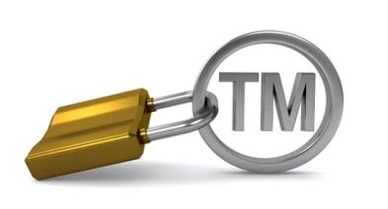Common Mistakes to Prevent When Filing for a Trademark
Introduction
A trademark is a symbol that differentiates one’s brand from another. A trademark is a symbol that can consist of a device, label, name, signature, combination of colors and much more. The main objective of getting a mark registered is to distinguish it from other similar goods & services. A company/any person who can secure ownership over products and services, benefits not only the domestic income but also increases the recognition in the international market. The process of filing for a trademark can be complex and making mistakes while filing can lead to delays or rejections.
Any logo, for example three-stripes of Adidas, a combination of colors, red and white, is used in Coca-Cola or numerals such as 3M. So, in this blog, we will look through the most common mistakes that a person makes while filing a trademark and how to avoid them.
Mistakes to prevent when filing for a trademark
- Selecting a Descriptive Mark or a Generic Mark: One of the most repeated mistakes is selecting a descriptive or a generic mark for goods & services. Registration of everyday words such as “bottle”, “company” etc, is not allowed.
How to prevent: One should select a unique/distinctive mark that represents your brand. This increases the chances of your mark being accepted and provides strong protection against any infringement.
- Words of Common English: In the case, Institute of Directors v. Worlddevcorp Technology and Business Solutions Pvt. Ltd.[1], the Delhi High Court stated that “words of ordinary English usage could not be monopolized, otherwise, the entire English language would be appropriated by few, which cannot be permitted”.
How to prevent: Use fancy words with no prior meaning. Consider using words from other languages, which are not common in English speaking countries. You can also misspell words deliberately to avoid any conflict.
- Conducting a profound search: The most common mistake is not conducting a profound trademark search before filing. Without a deep search, one can select a mark and infringe the already existing trademark or similar to it and it can lead to financial losses.
How to prevent: Hire a trademark attorney to perform a detailed search. Use the Public Search Tool given by the Indian Trademark Registry.
- Incorrect Classification of Goods & Services- In India, the trademarks are categorized into 45 classes and it is based on the nature of the goods and services. So, selecting a wrong/incorrect class can lower your chances of getting your mark registered. Selecting the wrong class could force the party to reapply the application and pay the fees again.
How to prevent: Conduct a deep search of the different classes in India and select the one that fits perfectly for the nature of your goods and services. If your business is covering various categories, one can apply to various classes to get protection.
- Ignoring Trademark Watch Services: Once the trademark application is filed, monitoring its progress is an important step. This if not taken care of can lead to missed deadlines for responding to objections or opposition, leading to abandonment of the application.
How to prevent: Keep an eye on the status of your application on the Indian Trademark Registry online portal or hire an attorney to track the status and respond to any objections, if required.
- Missing Trademark Renewal Deadlines: In India, once a mark is registered, it is registered for 10 years. Missing renewal deadlines cause a mark to expire, which means you will lose the exclusive right to it.
How to prevent: Keep track of the renewal deadlines and ensure that all the necessary documents are submitted on time or hire an attorney to keep track of the deadlines and file the same on your behalf.
- International Consideration: If a person plans to expand his business abroad, he should consider trademark protection beyond his home country. Trademarks are territorial, meaning that protection in India does not extend to other countries. If a person does not protect his trademark internationally, he can lose his rights in a foreign market.
How to prevent: India is a member of the Madrid Protocol, which allows a person to file for international trademark protection in a single application. It saves filing costs and avoids language barriers by not hiring multiple agents.
- Attempting to file it all alone: Filing a trademark application involves legal complexities like incorrect classification or incomplete search. Many businesses in India, try to file their application without any assistance, which leads to errors or rejection.
How to prevent: Seek help from a trademark attorney, who has a deep knowledge of Indian Trademark Laws. An attorney shall help you guide the way to increase the likelihood of a successful registration.
- Not claiming your Legal Rights: The most important step, registering your mark. From there it is important to actively monitor and enforce your legal rights in order for a brand owner not to lose control of the strength of its mark.
Prevention: Monitor the market to identify infringements. When such a situation arises, do what you can to protect your brand; whether that means taking the matter before a judge or sending out cease and desist letters.
Conclusion
Filing the application for your mark and enforcing legal rights are very crucial steps towards protecting and building your brand. Any new filing needs proper, thorough research to avoid later-on conflicts with already existing trademarks. By preventing common mistakes such as using words of common English, not conducting a good search, selecting a mark which is generic or not distinctive and much more, one can increase their chances of getting their mark registered. One can hire a trademark attorney who has knowledge about Indian Trademark Laws and get help from him.
Author: Kartik Chandok, in case of any queries please contact/write back to us at support@ipandlegalfilings.com or IP & Legal Filing
[1] 2023 SCC Online Del 7841



